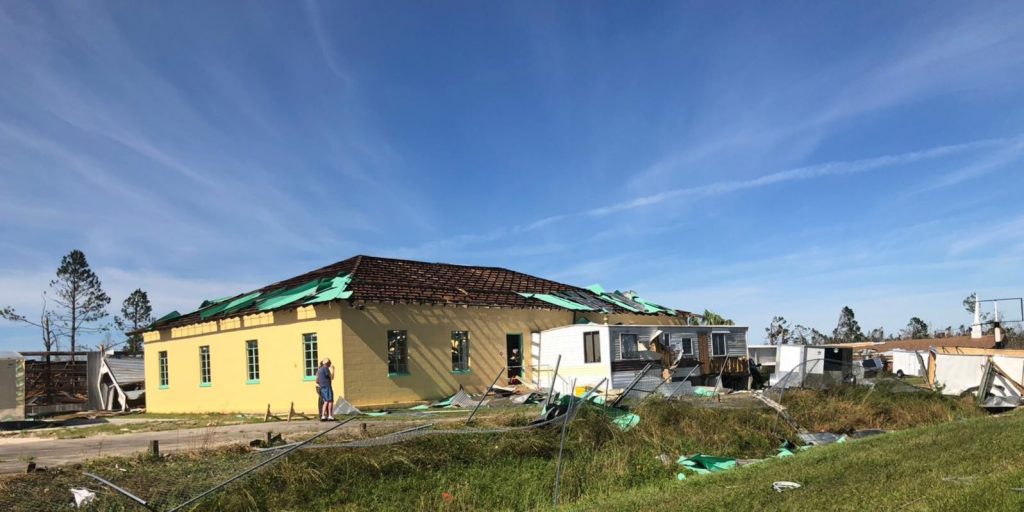Rebuilding Panama City the right way, one year after Hurricane Michael
With the one-year anniversary of Hurricane Michael’s devastation on the near-term horizon, now is an appropriate time to take a step back and review the success of the rebuilding efforts to date – and look ahead to the bright future for Panama City’s long-term recovery.
By every metric imaginable, last year’s storm wrought untold damage across the Florida Panhandle. Indeed, based on decades of experience helping cities of all sizes chart a path forward after disasters, including New York City after 9/11 and Superstorm Sandy, it is clear to me that Panama City’s results speak volumes about how to do it the right way. And that’s not an easy assignment, especially since Michael was the strongest hurricane to ever make landfall in the Panhandle, and the first Category 5 hurricane in the U.S. since Hurricane Andrew leveled parts of South Florida in 1992.
From hurricanes to earthquakes to fires that harm entire communities, every disaster is unique and presents a host of challenges that necessitate tailored solutions and programs customized to salve immediate needs along with a blueprint that goes beyond simply rebuilding to its pre-disaster condition. Indeed, four key best practices – organization, recognition, realization and implementation – have proven effective in helping communities accelerate their progress through the arc of recovery from catastrophe to prosperity.
Beginning as quickly after a natural disaster as possible, building the right model to organize what will be a multi-year and multi-part recovery effort is absolutely essential. In my experience, that means the creation of a strong, centrally-managed team, with full, active support from the city’s leadership, that has the strategic vision to look across all of the relevant domains. In the case of Panama City, they have exhibited the gravitas to command sustained focus and attention on a breadth of needs ranging from housing to debris removal to public safety to economic revitalization to infrastructure repair and improvement.
Moreover, it is also recognition of the fact that outside specialists will be needed to support specific, deeply technical initiatives in the context of the overall plan. Whether it is understanding how to effectively work with the Federal Emergency Management Agency (FEMA) to access funds quickly, or the wholesale reimagination of a city, local leaders often lack in-house access to these critical skills.
At the same time, no recovery effort will be successful – or last long enough to have a meaningful impact – unless there is sustained community support for the plan. Without question, this process requires a true partnership between government leaders, residents, businesses, non-profit organizations, and clergy to embrace a rebuilding program that will deliver on the community’s collective objectives. The June 2019 Charrette Week – which included town halls, public meetings, and focus groups involving local and state government, business leaders, community stakeholders and most importantly, local citizens — is a perfect example how such a commitment is operationalized. This commitment is ongoing with the October 8th presentation and ratification of the Panama City Economic Development Plan and the city’s strategic vision for the historic downtown and its waterfront by the city commission.
Simultaneously, it is important to temper these goals with a realization of the financial assistance that is attainable, the resources that can be mustered and the length of the journey that the community is willing to endure, among a number of other key factors. Federal, state and local budgets are limited and competition for available funding is always fierce. By the same token, the opportunity to leverage multiple channels for assistance can have a long-term positive impact, as Panama City’s partnership with Tyndall Air Force Base (and the jobs that go with it) makes clear. Taking advantage of natural resources – and the industries associated with them – offers additional avenues for sustainable growth.
With an efficient triage program, communities are able to develop and drive their “wish list” as far and as fast as possible – and then balance it effectively with the resources and opportunities that are available. While there is no silver bullet solution to overcome the decade-long challenges that cities on the front end of rebirth have to face, post-disaster partnerships with local and state governments, along with flexible block grants and community ingenuity, can result over-time in a renewed sense of confidence in a community’s ability to build back better.
Ultimately, the steady implementation of the long-term recovery plan – accompanied by a parallel commitment to sustained communications – will strengthen the community-government bond. The progress will be incremental but must be persistent.
Without question, natural disasters leave scars that are slow to heal and necessitate the regular care delivered via a continuing program of redevelopment that features tangible milestones and, critically, is honest with the community about the scale of the challenges that remain to be overcome, the external funding available, and the timeline for doing so. From what I’ve seen after the first year, Panama City has all the ingredients to succeed in this recovery and rebuilding effort.
Stephen H. Hagerty is Founder & President of Hagerty Consulting, a management consulting firm that helps communities prepare for, respond to, and recover from disaster. He is also Mayor of Evanston, Illinois.




















